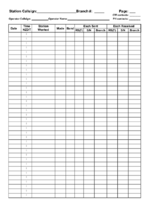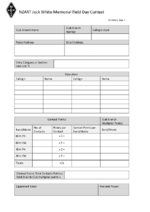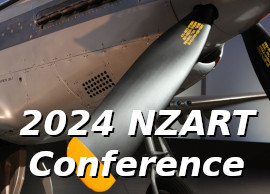 This annual contest is named to honour Jock White ZL2GX, NZART Contest and Awards Manager for over 40 years, for the service that he gave to NZART during that time.
This annual contest is named to honour Jock White ZL2GX, NZART Contest and Awards Manager for over 40 years, for the service that he gave to NZART during that time.
This contest is primarily to test Branch organisation and weld a team of workers together. Your team can aim to be as competitive or as social as it likes, or all points in between. There is work for all: spouses/partners, prospective members etc.
The next Jock White Memorial Field Day contest will be held on
Saturday/Sunday 22nd & 23rd February 2025
Results:
Results for previous years Field days are on the results page link to the right, or by clicking here.
Rules:
1. AIMS and OBJECTIVES:
For NZART Branches and clubs (hereafter referred to as branches) to establish effective temporary HF radio stations, to work as many other New Zealand stations as possible and to learn to operate in an abnormal situation in less than optimal conditions.
Home stations can also participate but are strongly encouraged to make a minimum of either 50 phone and/or 20 CW contacts on 80m and/or 40m and submit logs.
2. WHEN:
The last full weekend in February each year: on Saturday 1500-2400 NZDT and Sunday 0600-1500 NZDT.
NOTE: when February only has three full weekends then field day will be held on Saturday 28th February and Sunday 1st March. This is to avoid a clash with the ARRL International CW contest. This will next occur in 2026.
3. BANDS, MODES and POWER:
40 and/or 80 metres, PHONE (SSB) and/or CW, 100 watts PEP maximum.
Stations using two transmitters may operate simultaneously on both bands, however only one transmitter may be operated on a single band at a time. Single transmitter stations may operate on one or both bands.
4. SITES and SHELTERS:
Field station shelters may be one or more tents sited within 10 metres of each other and erected on the weekend of the contest. Caravans, mobile homes or other vehicles may also be used, but may only be moved on to the site on the weekend of the contest.
5. ANTENNAS:
Field station antennas may not be raised earlier than 1200 NZDT on the Saturday of the contest. Some stations may chose to erect antenna supports while others may use natural or standing supports. Eg. Hills, trees, towers, buildings etc.
6. ELECTRICAL POWER:
For field stations this must be from an independent source. i.e. batteries, portable generator engine alternators, solar power, wind or water powered generators, etc.
7. ENTRY CATEGORIES:
(Stations may only enter one category)
- Northern Region (Montgomery Cup)
- Central Region (Patea Shield)
- Midlands Region (ZL3/4 Trophy)
- Southern Region (‘4’ Trophy)
- Single Operator – unassisted by any other person
- CW only
- Phone only
- 80m only
- Single-transmitter station 40m and 80m
- QRP – 5 Watts CW/10 Watts SSB maximum (WM Hall Memorial Cup)
- Home stations
- Overseas stations in the Oceania Region
8. EXCHANGE:
- RS(T) report plus a serial number starting with 001 and incrementing by one for each successive contact, plus an NZART Branch number
- Simultaneous two-band operating stations must use separate serial number series for each band
- The same serial number series must be used for both Phone and CW contacts on the same band
9. MULTIPLIER NUMBERS:
Field day stations are usually at sites within the ‘local area’ of the Branch that the operators and others associated with the station are members of and use the number allocated to that Branch . If the chosen location is within the ‘local area’ of another Branch, care must be taken not to clash with the other Branch station. The onus is on the ‘moved’ station to ensure that there is no clash.
The numbers of Branches in recess may be used.
Individual operators or groups of operators may not have an affiliation to a particular NZART Branch but wish to operate a field station. In these cases it is suggested that they approach nearby Branches that don’t normally operate in this event and seek permission to use their Branch number.
The Field Day Contest Manager should be contacted well before the event if there are potential problems with the use of Branch numbers. Contact details are under point 14 below.
Home stations must use 00 as a Branch number.
10. OPERATING PERIODS:
Each hour will be an operating period with a total of 18 operating periods.
Contacts may be made with any other field, ZL home or overseas (Oceania) station, once each operating period, on each mode on each band.
11. SCORING:
Contact Points:
Phone - 3 points, CW - 5 points (note change from 2024 onwards)
Multiplier Points:
- Each different Branch contacted on each band and mode counts as a multiplier. i.e.: a maximum total of four multiplier points may be claimed for each Branch
- Only one station per Branch may be claimed as a multiplier per band and mode. However, in cases where a Branch has more than one station active, different stations contacted, may be claimed for multiplier points, up to a maximum of four multiplier points per Branch, not four per station
- Contacts between stations using the same Branch number count for contact points only. Multiplier points cannot be claimed
- Field stations must make a minimum of 50 contacts on Phone or 20 contacts on CW on each band that the station is active on, in order for the multiplier points for their station to be valid for other stations
Total Scores:
The sum of the contact points multiplied by the total Branch multiplier point numbers worked.
12. LOGS:
- Separate logs must be submitted for each band in time and serial number order, regardless of the operating mode
- Head each log sheet with; Station Callsign, Branch number or HS for Home Station, Page Number, Operator Callsign and Name
- Log sheet layout order; date – time – station worked – mode, CW or PH – band – exchange sent – exchange received. The total of PH/CW contacts on each page will be useful for log checking purposes
- Use a separate log sheet per hour period, except that where there are very few contacts in a period, several periods (ruled off between periods) can be on one sheet
- Highlight or underline each contact claimed as a Branch multiplier number
- Sample log sheets are provided in PDF on this page, to the right
- N1MM UDC that has been updated for the 2024 scoring change file can be downloaded here. Note that Log/Summary sheets are still required to be submitted
13. SUMMARY:
A completed Summary sheet must accompany all logs.
Page 1 of the Summary is to contain:
- Callsign used – Branch name & number or HS for home station
- Postal address for certificates and email address for results
- Section or Category entered (one only)
- Names & Callsigns of operators
- Contact totals for 80m phone, 80m CW, 40m phone, 40m CW and a calculation/total of claimed contact points
- Branch multiplier points claimed for 80m phone, 80m CW, 40m phone, 40 CW and total of Branch multiplier points
- Claimed Total Score, i.e: contact points multiplied by the Branch multiplier points
- Details of equipment used: antennas, transceivers, generators etc and power output
Summary pages 2 and 3 are for listing the callsigns of the stations claimed as Branch multiplier points for each Branch on each band and mode. Count the numbers in each column and transfer the sum totals to page 1 of the Summary.
14. ENQUIRIES
If any clarification is required on any matter related to field day please feel free to contact the Jock White Memorial Field Day Manager - Stuart Watchman ZL2TW at![]()
15. LOG DEADLINE:
Logs together with Summary Sheets must be posted to reach Stuart Watchman, ZL2TW, 17 Aerodrome Road, Blenheim 7201, no later than the Saturday which is four weeks after the Field Day Saturday.
Last Updated: 21 April 2024
Change Log:
5 Oct 2023
Scoring change - contact points within and outside ZL are now the same value to better reflect the aims and objective
Changed "South Pacific" to "Oceania" for qualifying overseas contacts as it is a better defined region



